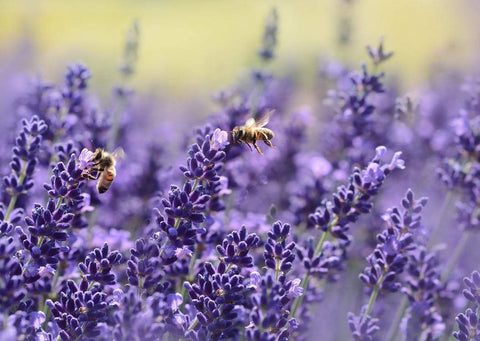“Mankind will not survive the disappearance of honeybees for more than five years.”
-Albert Einstein.
Studies over the last several years have shown that we may soon see if Einstein’s prophecy will come to pass. A massive decline in bee population has been reported in the US by beekeepers, in some states the decline is severe as 70% of the population. The decline in population is so severe that for the first time in history the honey bee is being classified as an endangered species.
This phenomenon causing the decline in bee population is being call the Bee Colony Collapse Disorder (CCD).
But what does Colony Collapse Disorder really mean?
Colony Collapse Disorder is a disorder defined by worker bees in a bee colony disappearing, which in turn decimated the bee population. The earliest recorded occurrences of CCD were documented as early as 1869 and episodes of CCD have been occurring at least once every decade since then.
CCD is not to be confused with simple bee migration though. There are several key differences between CCD and Bees migrating. In an episode of CCD hives were found to still contain large stores of honey and pollen inside but there were no worker bees to be found, whilst migrating bees will carry their stores of food with them to be used later. Another good indication of CCD versus migration has to do with the Queen. In an episode of CCD, the worker bees will abandon their queen when they disappear, whereas migrating bees with carry their queen to the new location.
What Causes Colony Collapse Disorder?
Scientists have been able to identify several factors they believe to be the cause of CCD in Honeybees. The first and most destructive to the bees in presence of varroa mites invading hives. Varroa mites are a parasite which can only breed inside of bee colonies and carry deadly viruses that they pass to the bees which can cause paralysis in bees and cause deformed wing syndrome. On top of the viruses, bees can get directly from these little pests is the fact that once the viruses have weakened the immunity of their hosting bees they make them susceptible to any number of other ailments. Varroa mites will also feed on bee larvae, further decimating their numbers.
Besides Varroa mites bees also have to contend with other factors that cause CCD such as fungal infections, invading hive beetles, the use of pesticides, and even weather changes.
Though it is said that pesticides with rarely lead to the death of bees they have been linked to the change in development in bee, especially in pesticides containing thiamethoxam and clothianidin chemicals. Neonicotinoids is a relatively new class of insecticides that are known to affect the central nervous system of insects that results in paralysis and death. When bees are exposed to neonicotinoids, they go into a shock and are no longer able to find their way back to the hive.
As weather patterns change sporadically they can cause the onset of CCD. A sudden rain can wash away pollen which is important to the bee’s health and nutrition or in the longer dry seasons can cause a strained buildup of honey.
So why would this mean the end of humanity?
Some plants are pollinated by wind, but that rate is very slow. Insects are the primary pollinators on the planet. Beetles and butterflies also pollinate, but bees are the most efficient insects for this purpose. Over 60% of all fruits and vegetables consumed by humans are pollinated by bees. They are the primary pollinators if not the only pollinators of many of these fruits and vegetables. Many plants such as almonds, pears, apples, strawberries, and blackberries are only pollinated by bees. Almond trees would be among the first casualties.
Rapeseed, more commonly known for the end product it produces known as Canola oil, is one that is almost completely dependent on honeybees for pollination. Canola oil is grown not only for cooking oil, but it is also used to produce biofuel. If we were to run out of biofuel, we’d have to rely on fossil fuels completely, thus putting further pressure on the environment.
Cotton is also very reliant on pollination from bees. The disappearance of bees will lead to a huge setback in cotton production, as it will significantly reduce your clothing options.
The decline of bee population has become a global problem in farming many fruits and vegetables. The detriment of the decline has had farmers hiring local beekeepers to have hives brought to their farms to assist them in pollinating their plants.
If bees went extinct, there would be a massive decline in the production of crops. Although crops like rice and wheat don’t require insect pollination, ask yourself how long can people survive by eating rice and bread all their life?
So, if bees were to go extinct, here’s a short list of food we would be sure to lose:
- Apples
- Almonds
- Blueberries
- Cherries
- Avocados
- Cucumbers
- Onions
- Grapefruits
- Oranges
- Pumpkins
- Watermelons
- Peaches
- Blackberries
- Raspberries
- Plums
- Pears
- Rapeseed
With a declining population of herbivores, we will start to see a declining population of carnivores as well. Though the declining populations might benefit scavengers such as eagles, vultures, and ravens in the short term.
One more worry of losing bees is the topographic changes we will experience.
Imagine a landscape where plants, unable to grow any longer would become barren. Grassland would disappear and large-scale desert will take their place.
This will be a common sight if bees disappear.
A treeless Earth would make its inhabitants more susceptible to natural disasters like floods and landslides which are mitigated by the presence of tree roots that holds together the soil. Not only does it lessen such dangers, the presence of tree roots retains the nutrients in the soil on which we grow our food.
On a planet without bees, the surface of our home would be barren and the vast richness of Earth’s green cover would disappear. This would, in turn, affect the abundance of wildlife and species that survive in their forest and jungle habitats.
Food webs and food chains would collapse. Not only are bees important for livestock and domesticated animals that rely on bee-pollinated plants, but wild mammals and birds also depend on pollination for the supply of their food. A world devoid of bees would signal the demise of complex food chains and food webs that delicately balances the existence of all living creatures on this planet.
Herbivores, who depend on certain plant species, will be affected first. They would go extinct if plants ceased to exist. For example, many cattle used for milk and meat depend on alfalfa and lupins, both of which depend on insect pollination. If the cow’s food supply declines, then meat and milk production will decrease. This will seriously affect the human diet.
Our blue planet is so far, the only planet that we know of that sustains life; it boasts of a rich biodiversity that makes it a unique place in the universe.
The rich biodiversity of our home planet is in part contributed by the existence of bees and their role in pollination. As these bees fly from flower to flower, plant to plant, they transfer pollen that allows plants to get fertilized and yield crops, fruits and vegetables.
Not only are they of utmost importance to humans and other species, by they also pollinate gardens, wild country sides and add to the beauty of the Earth’s landscape.
Without bees, our planet would be bereft of its beauty and its biodiversity greatly reduced.
In short, we may initially survive the extinction of bees, but what kind of world will we live in without them cultivating our world. And how long would we survive for?




